Eating the right foods can make a big difference for people with insulin resistance. This health issue makes it hard for the body to use insulin well. Certain foods can help improve insulin sensitivity and lower blood sugar levels.

Introducing Sugar Defender, an advanced blend of 24 proven ingredients supporting healthy glucose levels and natural weight loss.
This article looks at 10 top food choices for those with insulin resistance. These foods are tasty and good for health. They can be part of yummy meals that may help manage insulin resistance.
1) Avocado
Avocados are a great food for people with insulin resistance. These creamy fruits are packed with healthy fats and fiber, which can help control blood sugar levels.
Eating avocados may improve insulin sensitivity in people who are overweight or obese. This means the body can use insulin more effectively to manage blood sugar.
Avocados are also low in carbs but high in nutrients. They contain vitamins, minerals, and antioxidants that support overall health.
Adding avocado to meals can make them more filling. This may help with weight management, which is important for insulin resistance.
Some studies suggest that replacing carbs with avocado in meals might be beneficial. This swap could lead to better blood sugar control over time.
Avocados are versatile and easy to include in your diet. They can be added to salads, sandwiches, or eaten on their own as a snack. Their creamy texture makes them a tasty addition to many dishes.
2) Blueberries
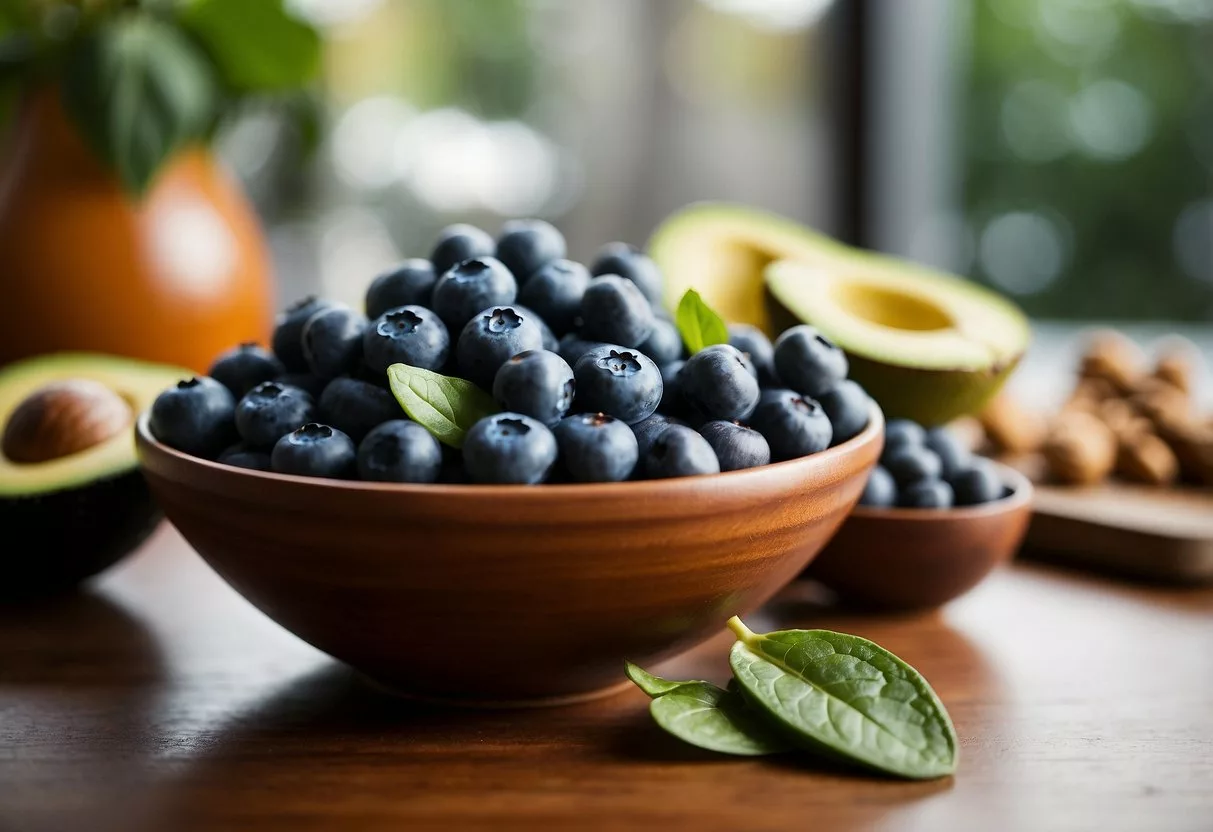
Blueberries are a tasty and healthy fruit that can help with insulin resistance. These small berries are packed with nutrients and antioxidants that are good for the body.
Studies show that eating blueberries can improve insulin sensitivity in people who have trouble using insulin well. This means the body can use insulin better to control blood sugar levels.
In one study, obese adults with insulin resistance who ate blueberries every day for six weeks saw their insulin sensitivity increase by about 22%. This is a big improvement in how well their bodies used insulin.
Blueberries may help in a few ways. They can reduce inflammation in the body, which is linked to insulin resistance. They also contain special plant compounds that may directly affect how the body handles blood sugar.
Adding blueberries to your diet is easy. You can eat them fresh as a snack, add them to yogurt or oatmeal, or blend them into smoothies. Frozen blueberries work just as well if fresh ones aren’t available.
3) Chia Seeds
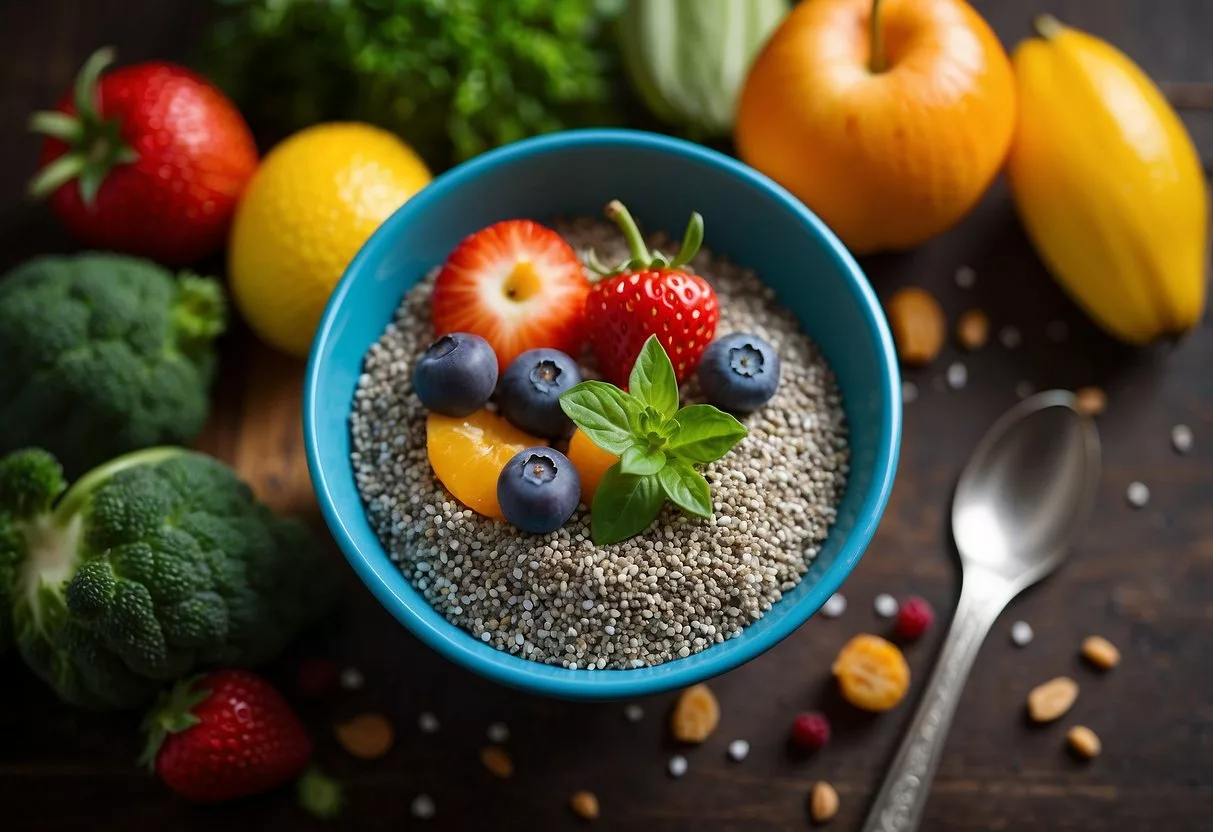
Chia seeds are a powerhouse food for people with insulin resistance. These tiny seeds pack a big punch when it comes to nutrition and health benefits.
Chia seeds are high in fiber, which helps slow down digestion and prevent blood sugar spikes. This can be especially helpful for those struggling with insulin resistance.
Another great thing about chia seeds is their protein content. Protein helps keep you feeling full and can help stabilize blood sugar levels throughout the day.
Chia seeds also contain alpha-linolenic acid, an omega-3 fatty acid that may help improve insulin sensitivity. This means your body can use insulin more effectively.
Studies have shown that adding chia seeds to the diet can help lower blood pressure in people with type 2 diabetes. This is an added bonus for those managing insulin resistance.
Chia seeds are easy to add to your diet. You can sprinkle them on yogurt, add them to smoothies, or use them in baking. They have a mild, nutty flavor that blends well with many foods.
4) Spinach
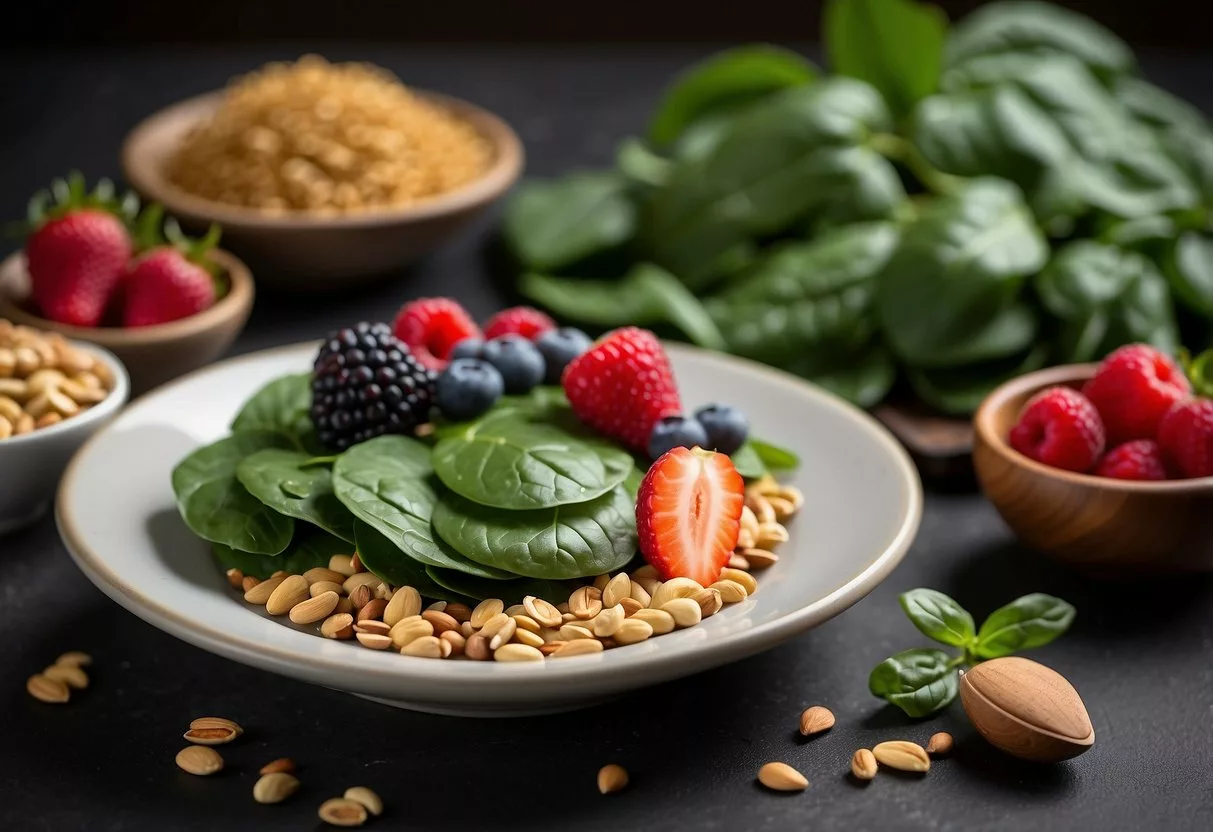
Spinach is a nutritious leafy green that can help with insulin resistance. This veggie is packed with vitamins and minerals that support overall health.
Spinach may improve insulin sensitivity and reduce markers of inflammation. Its high fiber content helps slow down digestion, which can prevent blood sugar spikes after meals.
The antioxidants in spinach, like vitamin C and beta-carotene, fight harmful free radicals in the body. This may help protect cells from damage linked to insulin resistance.
Spinach is low in calories but high in nutrients. It’s a great addition to salads, smoothies, or cooked dishes. Aim for 1-2 cups of spinach per day to reap its benefits.
Studies on rats have shown that spinach can affect gut bacteria and insulin response. While more research is needed in humans, these findings are promising.
Spinach is easy to add to your diet. Try mixing it into omelets, adding it to sandwiches, or using it as a base for salads. With its mild flavor, it blends well into many dishes.
5) Quinoa
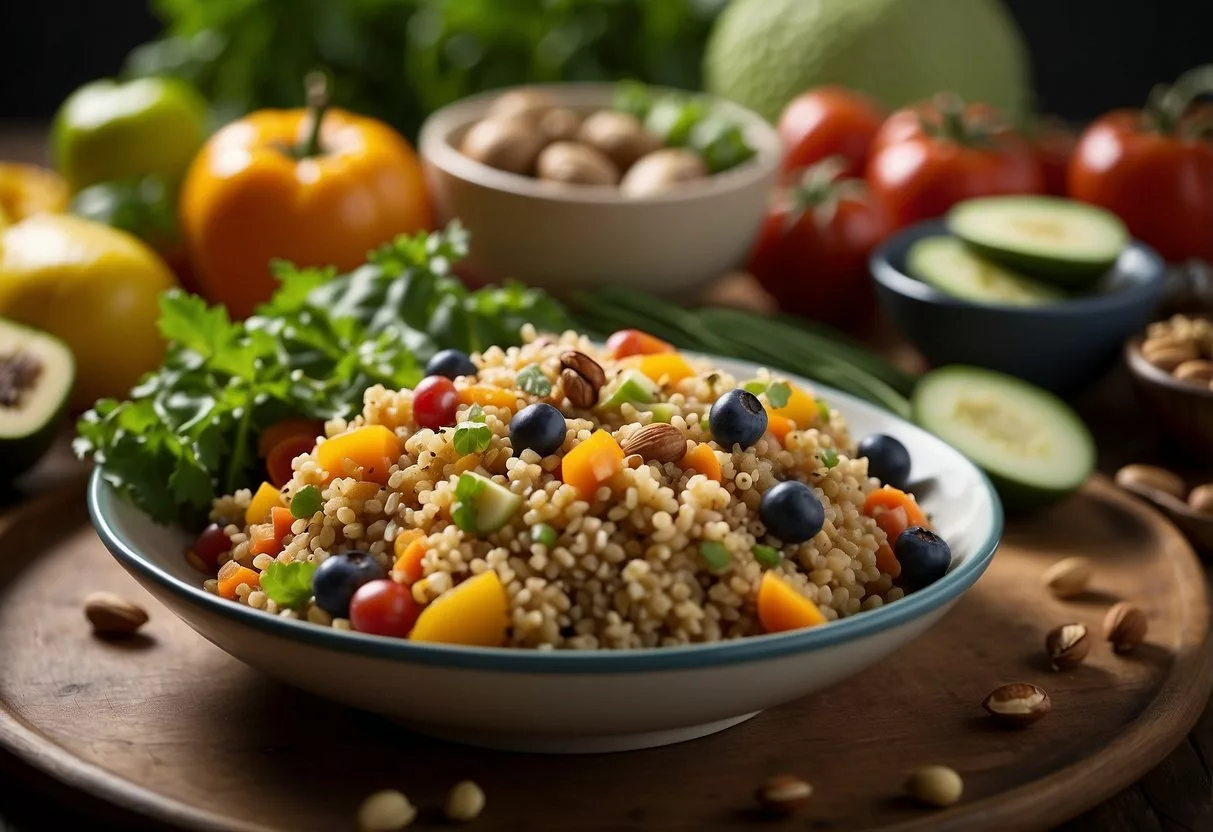
Quinoa is a nutritious grain-like seed that can help manage insulin resistance. It’s packed with protein, fiber, and important minerals.
Quinoa has a low glycemic index, which means it doesn’t cause quick spikes in blood sugar. This makes it a great choice for people watching their glucose levels.
Studies show that quinoa may improve insulin sensitivity. In one study, quinoa helped reduce insulin resistance in rats. It also boosted antioxidant and anti-inflammatory markers.
Adding quinoa to your diet is easy. You can use it in place of rice or pasta in many dishes. It also makes a tasty breakfast when cooked like oatmeal.
Quinoa contains all nine essential amino acids. This makes it a complete protein source, which is rare for plant foods.
Try cooking quinoa in vegetable broth for extra flavor. You can add it to salads, soups, or stir-fries. It’s a versatile food that fits into many meal plans.
6) Sweet Potatoes
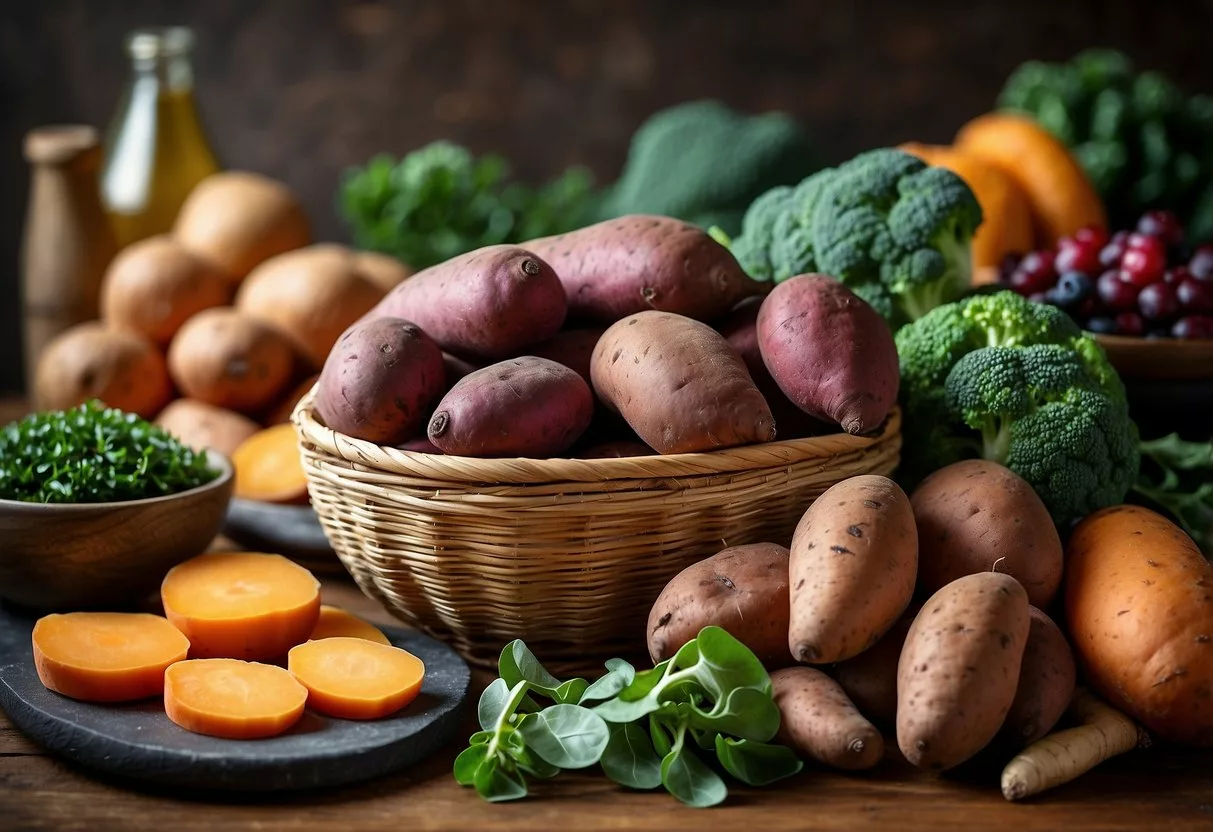
Sweet potatoes are a tasty and healthy food that can help with insulin resistance. They have a lower glycemic index than regular potatoes, which means they don’t cause blood sugar to spike as much.
These orange-fleshed veggies are packed with fiber. Fiber slows down digestion and helps keep blood sugar levels steady. This can be good for people trying to manage their insulin sensitivity.
Sweet potatoes contain special proteins that may improve insulin sensitivity. Some studies have shown that eating sweet potatoes or taking sweet potato extracts can help lower blood sugar levels.
One study found that eating white-skinned sweet potato extract every day improved insulin sensitivity. This happened without changing body weight or how well the body used glucose.
Sweet potatoes can be cooked in many ways. Boiling, baking, or steaming are healthy options that keep their nutritional benefits. Adding sweet potatoes to meals can be an easy way to support better blood sugar control.
7) Greek Yogurt
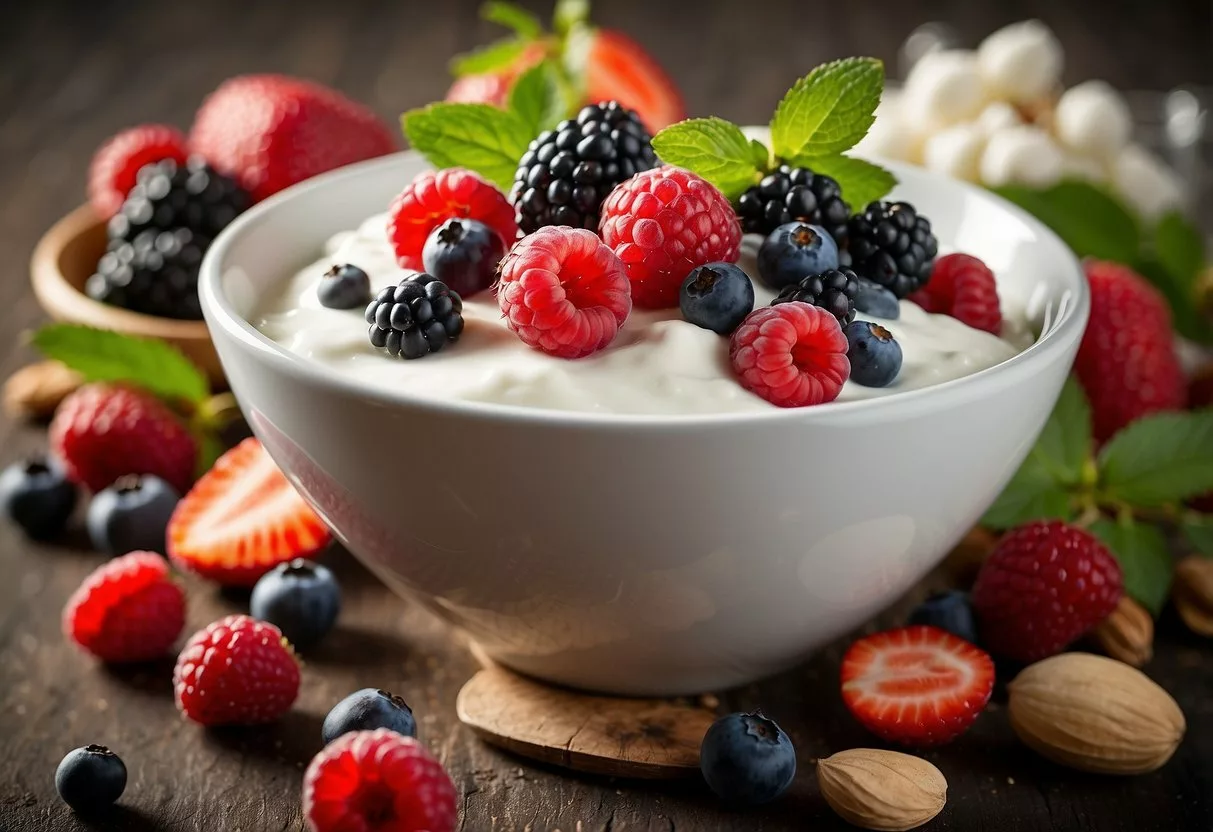
Greek yogurt is a great food for people with insulin resistance. It’s packed with protein and has less sugar than regular yogurt. This makes it a smart choice for blood sugar control.
The protein in Greek yogurt helps slow down digestion. This can prevent quick spikes in blood sugar after eating. It also keeps you feeling full for longer.
Studies show that eating yogurt can help improve insulin sensitivity. This means the body uses insulin more effectively to process sugar.
Greek yogurt has good bacteria called probiotics. These may help reduce inflammation in the body. Less inflammation can lead to better insulin function.
Adding Greek yogurt to your diet is easy. You can eat it plain or mix in some berries for extra flavor and nutrients. It’s also a good substitute for sour cream in recipes.
Research suggests that people who eat yogurt often have better diet quality. They tend to make healthier food choices overall.
Greek yogurt can be part of a balanced meal plan for managing insulin resistance. It’s a tasty and nutritious option that may help improve blood sugar control.
8) Almonds
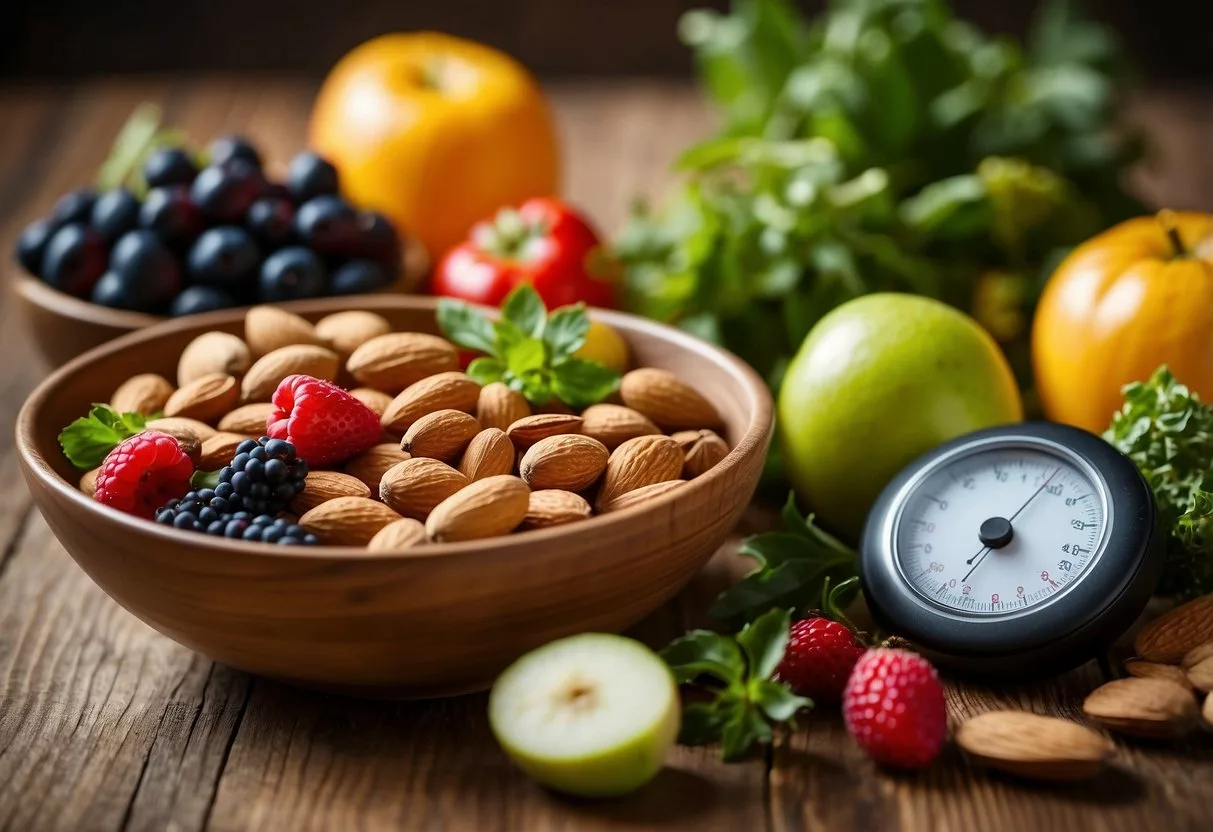
Almonds are a tasty and nutritious snack that may help with insulin resistance. These nuts are packed with healthy fats, fiber, and protein, which can help stabilize blood sugar levels.
Studies have shown that eating almonds can improve insulin sensitivity in people with prediabetes. Adding almonds to meals may also help reduce blood sugar spikes after eating.
Almonds are versatile and easy to include in your diet. You can eat them raw, roasted, or as almond butter. Try sprinkling some on your morning oatmeal or yogurt for a crunchy boost.
It’s important to remember that almonds are high in calories. Stick to a small handful (about 1 ounce) per day to avoid overdoing it. This amount is enough to get the benefits for insulin action without adding too many extra calories.
Almonds also contain magnesium, a mineral that plays a role in blood sugar control. This makes them a great choice for people looking to manage their insulin resistance.
9) Broccoli
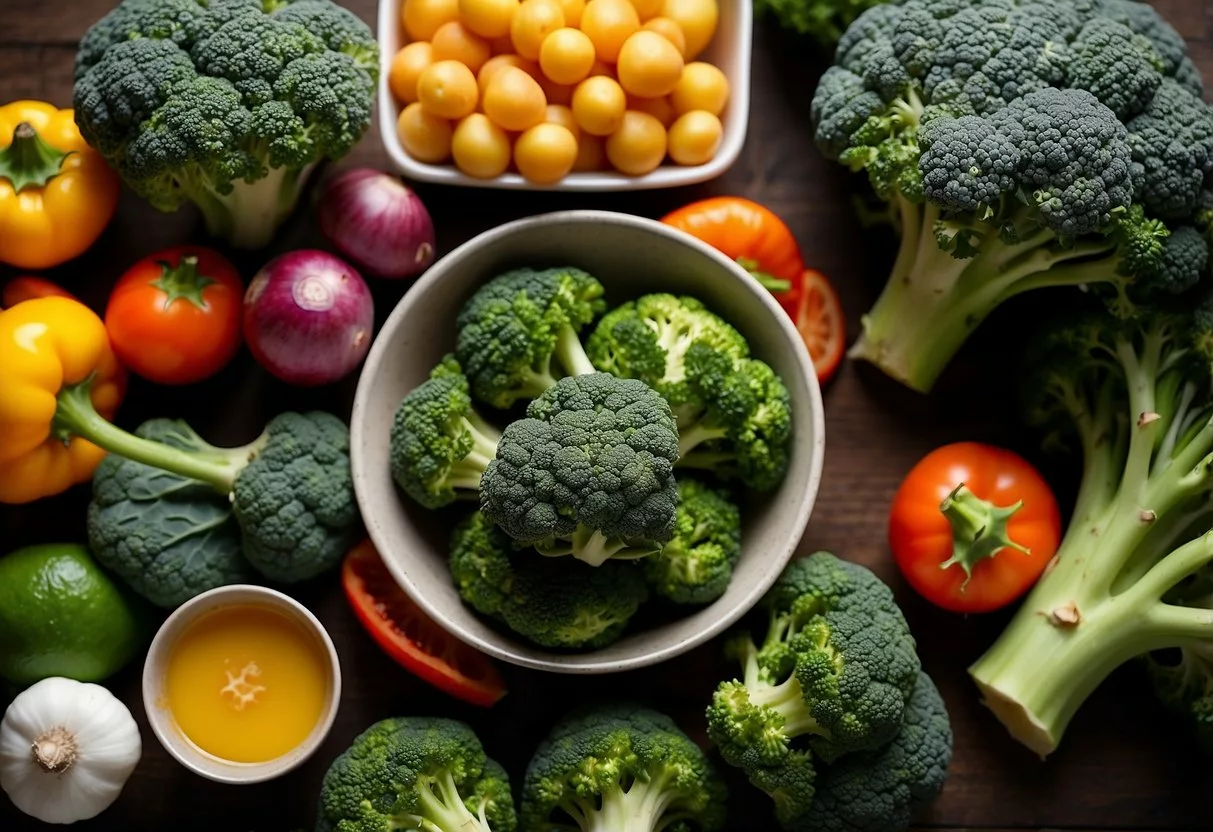
Broccoli is a great food for people with insulin resistance. This green veggie is packed with nutrients that can help manage blood sugar levels.
Broccoli contains a compound called sulforaphane. Studies suggest that sulforaphane may improve insulin sensitivity. This means the body can use insulin more effectively.
Eating broccoli regularly might help reduce the risk of type 2 diabetes. It’s low in calories but high in fiber, which helps keep blood sugar steady.
Broccoli sprouts are even more potent than mature broccoli. They have a higher concentration of sulforaphane. Research shows that broccoli sprout powder can have positive effects on insulin resistance.
Adding broccoli to meals is easy. It can be steamed, roasted, or eaten raw in salads. For the best results, it’s good to eat broccoli a few times a week.
Remember, broccoli is just one part of a healthy diet. It works best when combined with other nutritious foods and regular exercise.
10) Olive Oil
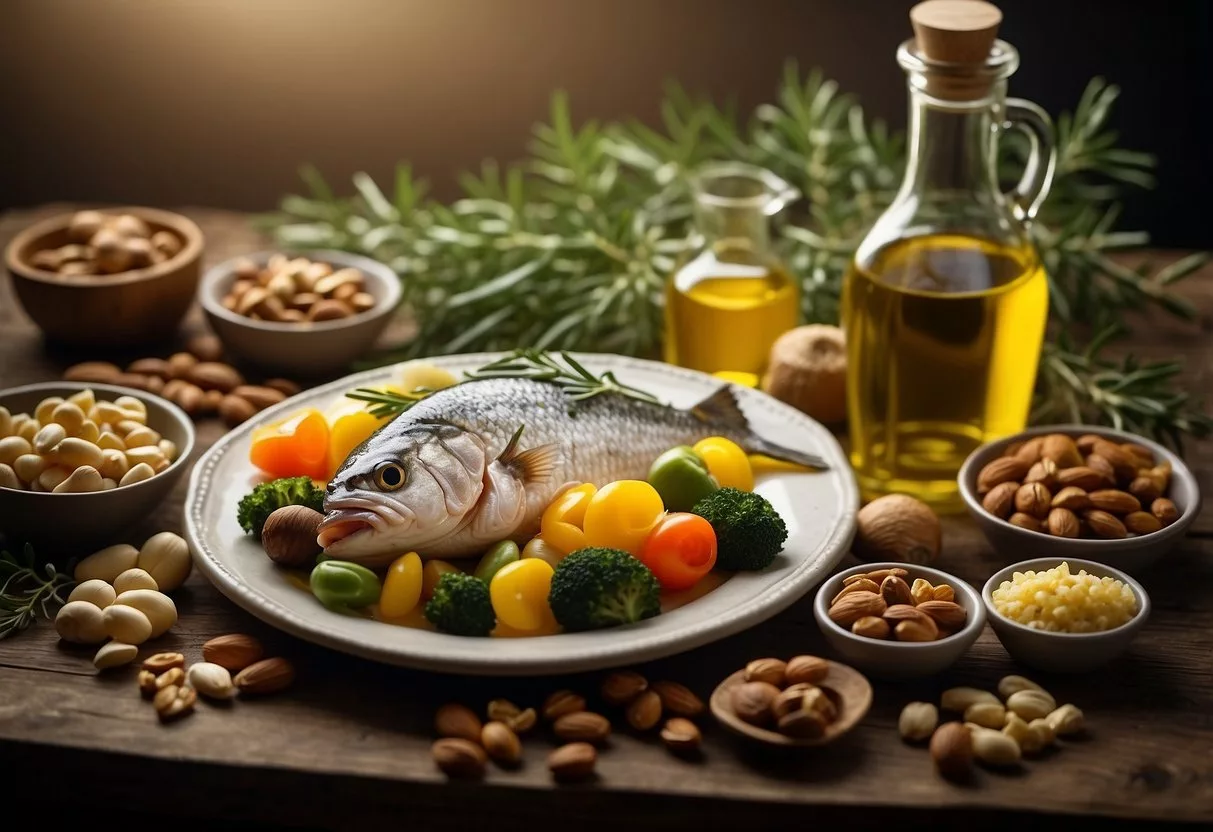
Olive oil is a key part of the Mediterranean diet. It’s full of good fats that can help with insulin resistance.
Extra virgin olive oil has lots of healthy stuff in it. This includes good fats and plant compounds that fight inflammation.
Some studies show that olive oil might make insulin work better in the body. This could help people who have trouble with blood sugar.
Olive oil may also help protect the liver. A study on rats found that olive oil with lots of plant compounds helped reduce liver problems caused by a high-fat diet.
Adding olive oil to meals can be easy. People can use it for cooking or as a salad dressing. It’s tasty on vegetables too.
But it’s important to remember that olive oil has a lot of calories. People should use it in place of other fats, not on top of them.
Choosing extra virgin olive oil is best. It has the most healthy plant compounds. These compounds may help the most with insulin resistance.
Understanding Insulin Resistance
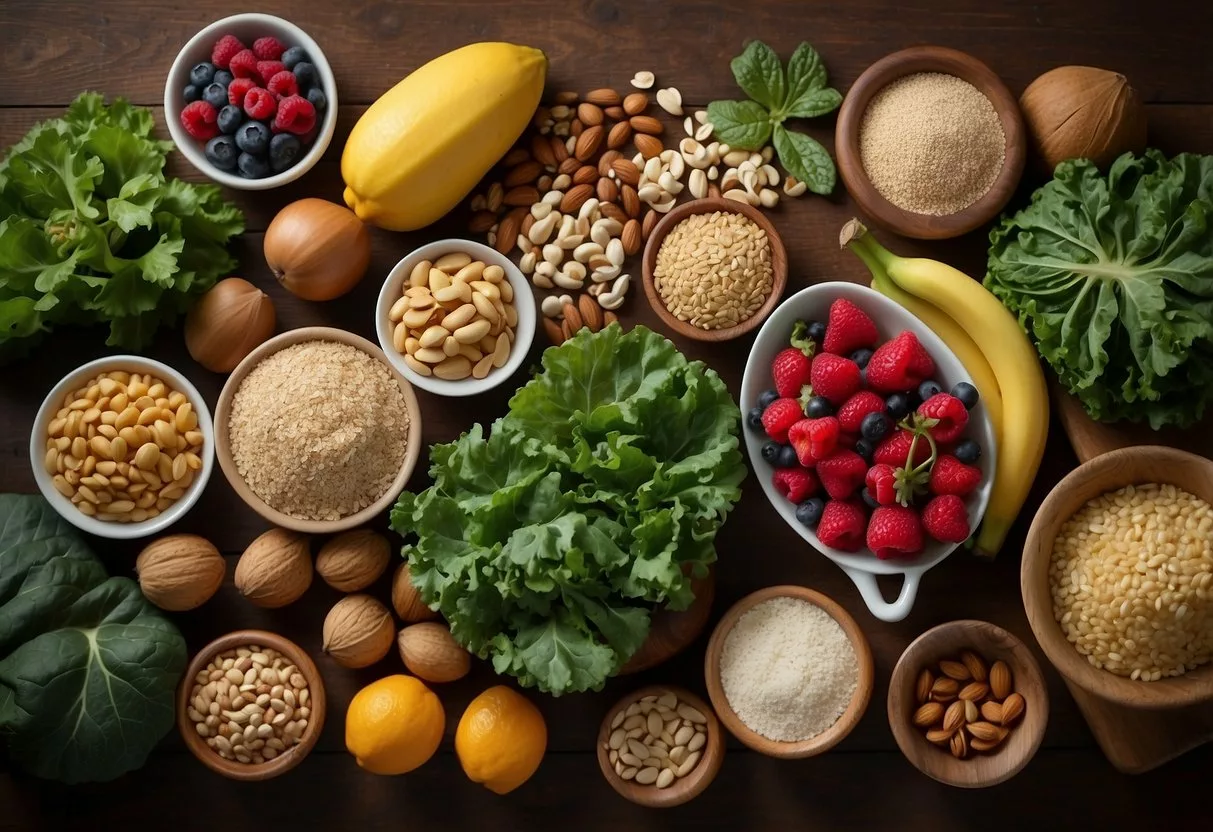
Insulin resistance is a key factor in many health issues. It affects how the body uses glucose and can lead to serious problems if not addressed. Learning about its causes and symptoms is important for better health.
What Is Insulin Resistance?
Insulin resistance happens when cells in the body don’t respond well to insulin. Insulin is a hormone that helps cells take in glucose from the blood. When cells resist insulin, glucose builds up in the blood.
This makes the body produce more insulin to try to lower blood sugar. Over time, this can lead to type 2 diabetes.
Insulin resistance is not a disease itself. It’s a state that can progress to more serious health problems if not managed.
Causes of Insulin Resistance
Many factors can cause insulin resistance:
- Being overweight or obese
- Lack of physical activity
- Poor diet high in sugar and processed foods
- Chronic stress
- Lack of sleep
- Certain medications
Genetics also play a role. Some people are more likely to develop insulin resistance due to their family history.
Changes in lifestyle over the past century have made insulin resistance more common. These include less physical activity and diets high in sugar and unhealthy fats.
Symptoms of Insulin Resistance
Insulin resistance often has no clear symptoms in its early stages. As it progresses, some signs may appear:
- Increased hunger
- Fatigue
- Brain fog or trouble concentrating
- High blood pressure
- Darkened skin in certain areas (acanthosis nigricans)
Weight gain, especially around the waist, can be a sign of insulin resistance. A waist size over 40 inches for men or 35 inches for women may indicate a problem.
If insulin resistance continues, it can lead to prediabetes or type 2 diabetes. Regular check-ups with a doctor can help catch these issues early.
Lifestyle Changes to Manage Insulin Resistance

Making smart choices in daily life can help control insulin resistance. Small changes in diet, exercise, and stress levels can make a big difference. These steps work together to improve how the body handles blood sugar.
Dietary Adjustments
Eating the right foods can help manage insulin resistance. A diet with whole, unprocessed foods is key. This means lots of fruits, vegetables, and whole grains.
People should cut back on sugary drinks and snacks. Instead, they can choose water or unsweetened tea. Protein is important too. Good sources include lean meats, fish, and beans.
Portion control matters. Using smaller plates can help. It’s also good to eat slowly and stop when feeling full.
Meal timing can make a difference. Eating regular meals helps keep blood sugar steady. Some find that eating smaller meals more often works well.
The Role of Exercise
Regular exercise is crucial for managing insulin resistance. It helps muscles use glucose better. This lowers blood sugar levels.
People should aim for at least 30 minutes of exercise most days. This can be broken up into shorter periods. A mix of cardio and strength training is best.
Cardio activities like walking, swimming, or biking are great choices. They get the heart pumping. Strength training helps build muscle. More muscle means better blood sugar control.
Starting slow is okay. Even a short walk after meals can help. The key is to be consistent and gradually increase activity over time.
Stress Management
Stress can make insulin resistance worse. It’s important to find ways to relax and unwind. This helps keep stress hormones in check.
Deep breathing is a simple but effective tool. It can be done anywhere, anytime. Yoga and meditation are also great options. They help calm both the mind and body.
Getting enough sleep is crucial. Most adults need 7-9 hours each night. A regular sleep schedule helps too. It’s best to avoid screens before bed.
Hobbies can be a great stress reliever. Reading, gardening, or crafting can take the mind off worries. Spending time with friends and family also helps reduce stress.
Frequently Asked Questions
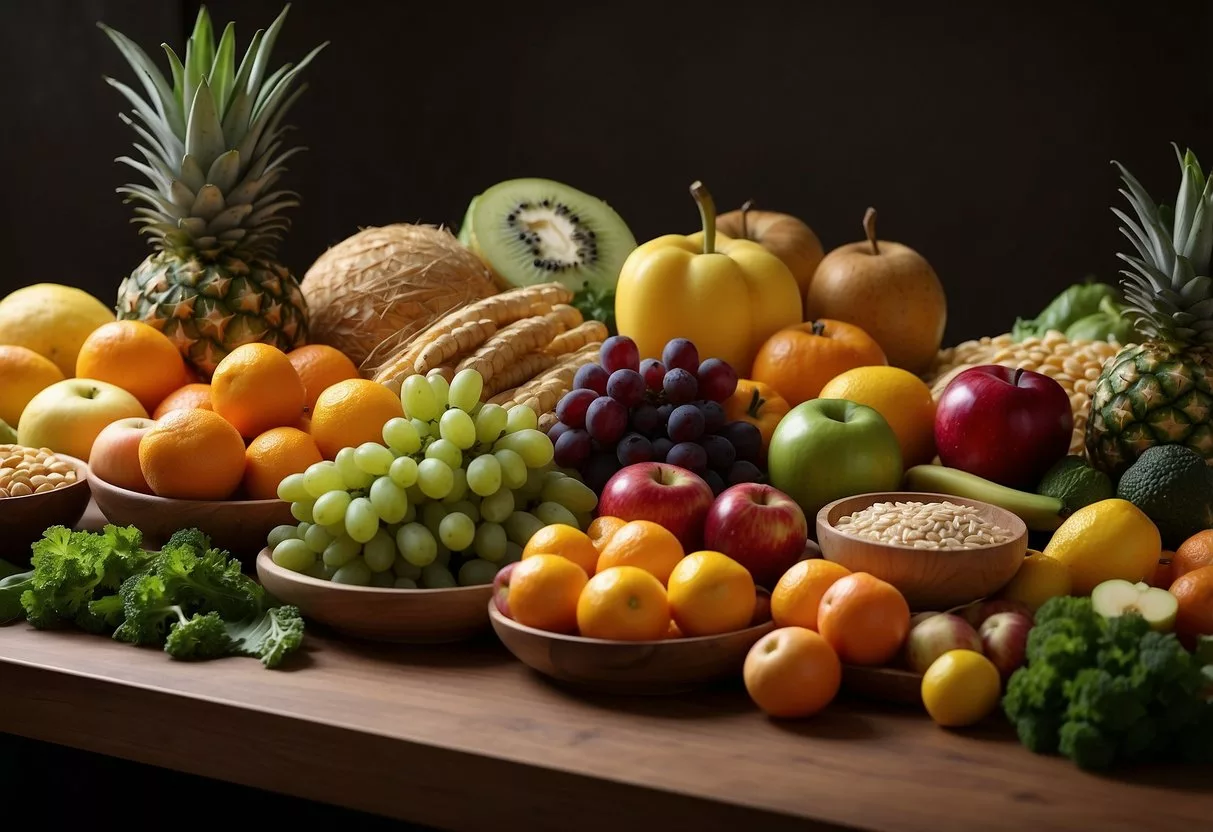
Managing insulin resistance through diet can be simple and effective. Here are some common questions about eating for better insulin sensitivity.
What are some effective dietary plans for managing insulin resistance?
The Mediterranean diet and low-carb diets work well for insulin resistance. They focus on whole foods, healthy fats, and lean proteins. These plans limit processed foods and added sugars.
Which foods are recommended for repairing insulin resistance?
Foods high in fiber and healthy fats are good choices. Avocados, blueberries, chia seeds, spinach, and quinoa top the list. Lean meats, fish, nuts, and seeds also help improve insulin function.
Can you suggest a healthy breakfast option for those with insulin resistance?
A Greek yogurt parfait with berries and chia seeds makes a great breakfast. It has protein, fiber, and healthy fats to keep blood sugar stable. Adding a handful of nuts adds extra nutrients and crunch.
What fruits are considered beneficial for improving insulin sensitivity?
Berries are the best fruits for insulin resistance. Blueberries, strawberries, and raspberries are low in sugar and high in antioxidants. Citrus fruits like oranges and grapefruits are also good choices.
Are there any natural supplements known to help reverse insulin resistance?
Some studies show chromium and cinnamon may help insulin work better. Magnesium and omega-3 fatty acids might also be useful. It’s best to talk to a doctor before starting any new supplements.
What changes can I make to my diet to lose weight while dealing with insulin resistance?
Cutting out sugary drinks and snacks is a good start. Eating more veggies and lean proteins can help with weight loss. Portion control and regular meals are key. Drinking water instead of sugary drinks also helps.
